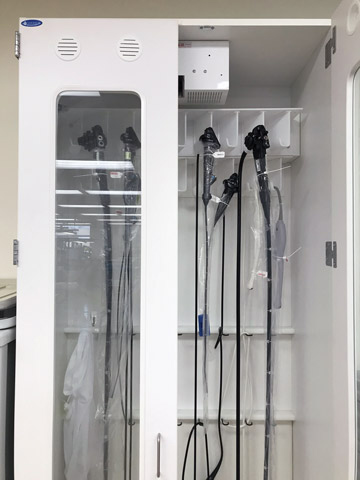No-wrap containers are viable, cost-efficient alternatives for protecting instruments as they go through the sterilization process, transport and storage.
 KARL STORZ
KARL STORZ
Today, healthcare facilities are confronted with escalating costs, unwanted waste and mounting compliance concerns in their Sterile Processing Departments (SPDs). Many hospitals and outpatient facilities that employ highly sophisticated KARL STORZ products, for example, are using sterilization trays that are outdated and costly. Furthermore, many are using trays in sterilization modalities that have not been cleared or validated for the products housed inside.
As part of the safe patient journey, surgical instruments go through decontamination and sterilization. Prior to sterilization, instruments are enclosed in a single-use, disposable polypropylene cloth, traditionally called blue wrap, which prevents entry of microbes and potential contamination. Disposable blue wrap presents a significant burden to hospitals and outpatient facilities in terms of cost, waste and operational efficiency.
KARL STORZ no-wrap containers are a superior alternative to sterilizing and protecting KARL STORZ products. The sterilization containers are a simple yet effective system for protection of endoscopic equipment and instrumentation during sterilization, transport and storage. Custom designed to accommodate KARL STORZ endoscopes, camera heads and instruments, KARL STORZ containers have been validated for a variety of sterilization modalities, including high-and low-temperature systems (e.g., autoclave, STERRAD, V-Pro maX).1 Available in a multitude of sizes and configurations, KARL STORZ sterilization containers have applications for many surgical specialties, including but not limited to: Neurosurgery, ENT, Laparoscopy, Urology and Pediatric surgery.
Each KARL STORZ sterilization container includes a container base and lid with an integrated filtration system and silicone gasket to ensure a secure seal, as well as custom basket trays with silicone holders for instrumentation and accessories. Containers are available with single- or multi-layered basket trays, depending on the application. Basket trays for each container are pre-assembled with a combination of silicone brackets, holders and inserts that are securely fixed to the tray, with thoughtful consideration to the intended load of the container.
KARL STORZ sterilization containers are reusable systems that require the use of disposable accessories for each cycle, including filters, process indicator and tamper-evident seal. However, the disposable costs associated with KARL STORZ are minimal in comparison to the disposable costs associated with blue wrap sterilization. All containers feature an integrated filtration system where single-use filters are placed. Filter retention plates secure the filters in place, and vents are offset to reduce the risk of puncturing the filter and compromising sterility.
Prior to sterilization, a single-use bio indicator card is placed on the outside of the loaded container and a single-use tamper evident seal is placed onto the latch of the container. When the cycle is complete, markers on the bio indicators indicate whether the loaded container was exposed to sterilant or not.
Available in a variety of colors that correspond to methods of sterilization, seals are used to inform the next user whether the container had been opened at any point during storage. Additionally, disposable accessories are available after market, and differentiated by container type and sterilization modality.
KARL STORZ sterilization containers offer significant cost avoidance to healthcare facilities currently using traditional, blue wrap trays. Although blue wrap trays have a lower upfront cost, there are ongoing costs associated with use of blue wrap that are avoided by conversion to KARL STORZ sterilization containers, such as cost of re-wrap due to improper care and handling (e.g., tears).
According to a white paper study, a large health system conducted a study to evaluate the cost avoidance captured at their facility over a 3-year period by converting 25 traditional blue wrap trays to 25 KARL STORZ sterilization containers for use with their existing inventory of KARL STORZ camera heads. Comparing the total per-wrap costs of the blue wrap option vs. the total per-cycle costs of KARL STORZ sterilization, the study discovered a cost avoidance of $5.86 for each use of a KARL STORZ sterilization container. Based on early findings of the study, it is projected that the health system will realize a total cost avoidance of over $29,000 during the 3-year study period. Following their conversion to KARL STORZ sterilization containers, the organization expects to realize a return on its investment after just 14 months of use.
References:
1. STERRAD, NX, 100NX are registered trademarks of Advanced Sterilization Products. V-Pro is a registered trademark and V-Pro maX is a registered trademark of Steris Corp.
Note: For more information go to www.karlstorz.com.
 LONG VIEW An investment in rigid sterilization containers can preserve instruments, reduce blue wrap use and potentially save money down the road.
LONG VIEW An investment in rigid sterilization containers can preserve instruments, reduce blue wrap use and potentially save money down the road..svg?sfvrsn=be606e78_3)



.svg?sfvrsn=56b2f850_5)